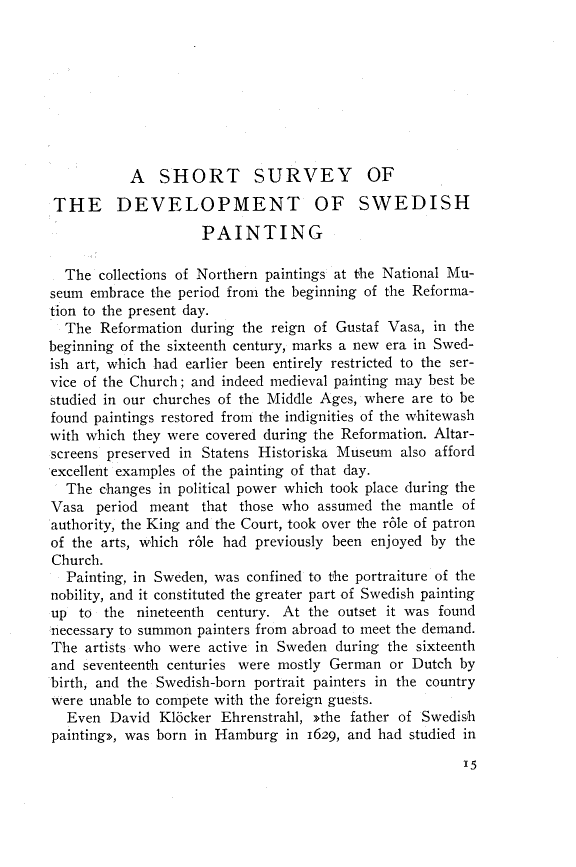
Full resolution (TIFF) - On this page / på denna sida - A short survey of the development of Swedish painting

<< prev. page << föreg. sida << >> nästa sida >> next page >>
Below is the raw OCR text
from the above scanned image.
Do you see an error? Proofread the page now!
Här nedan syns maskintolkade texten från faksimilbilden ovan.
Ser du något fel? Korrekturläs sidan nu!
This page has never been proofread. / Denna sida har aldrig korrekturlästs.
A SHORT SURVEY OF
THE DEVELOPMENT OF SWEDISH
PAINTING
The collections of Northern paintings at the National
Museum embrace the period from the beginning of the
Reformation to the present day.
The Reformation during the reign of Gustaf Vasa, in the
beginning of the sixteenth century, marks a new era in
Swedish art, which had earlier been entirely restricted to the
service of the Church ; and indeed medieval painting may best be
studied in our churches of the Middle Ages, where are to be
found paintings restored from the indignities of the whitewash
with which they were covered during the Reformation.
Altar-screens preserved in Statens Historiska Museum also afford
excellent examples of the painting of that day.
The changes in political power which took place during the
Vasa period meant that those who assumed the mantle of
authority, the King and the Court, took over the rôle of patron
of the arts, which rôle had previously been enjoyed by the
Church.
Painting, in Sweden, was confined to the portraiture of the
nobility, and it constituted the greater part of Swedish painting
up to the nineteenth century. At the outset it was found
necessary to summon painters from abroad to meet the demand.
The artists who were active in Sweden during the sixteenth
and seventeenth centuries were mostly German or Dutch by
birth, and the Swedish-born portrait painters in the country
were unable to compete with the foreign guests.
Even David Klöcker Ehrenstrahl, »the father of Swedish
painting», was born in Hamburg in 1629, and had studied in
15
<< prev. page << föreg. sida << >> nästa sida >> next page >>